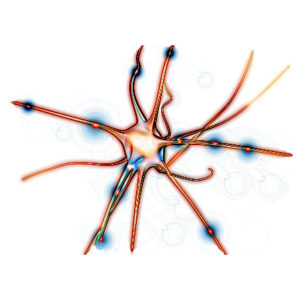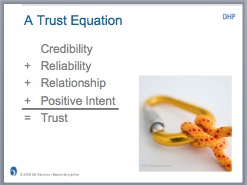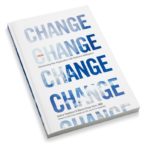What is your goal with learning? Is it enough for participants to get information, or do you want some change, some transformation, as they actually APPLY the learning?
What makes that work?
 One the reasons Six Seconds’ programs are transformational is our commitment to a rigorous approach to learning. We come from a “constructivist” history, rooted in the humanistic school of education. In constructivism, the goal is for learners to build (construct) meaning. Rather than imparting information or telling them what you’ve just taught, a constructivist focuses on facilitating learners to answer their own questions and to integrate new insights. We are also influenced by “confluent” theory, the notion that richness in learning comes from the flowing together of cognition and emotion.
One the reasons Six Seconds’ programs are transformational is our commitment to a rigorous approach to learning. We come from a “constructivist” history, rooted in the humanistic school of education. In constructivism, the goal is for learners to build (construct) meaning. Rather than imparting information or telling them what you’ve just taught, a constructivist focuses on facilitating learners to answer their own questions and to integrate new insights. We are also influenced by “confluent” theory, the notion that richness in learning comes from the flowing together of cognition and emotion.
In recent decades, “brain based learning” captures these schools of thought and advocates for learning that builds “hot cognition.” Hot cognition means there is a highly activated brain state where thinking is accelerated and deepened because the learner is fully involved. I’ve posted before about our learning philosophy, the five principles we use to guide the way we teach, coach, facilitate, mentor, and consult so that we fuel hot cognition – this is the “how” of our methodology.
In addition to that underlying “how,” we have a very specific design methodology which structures learning as a change process. Because learning and change are so closely linked, we use our Change MAP as a structure (a good orientation to this model can be seen in the Case Study about our change program with the US Navy). As we apply the change process to learning, we get a very powerful structure.
 The Change MAP, and our learning design method, is a spiraling cycle. There are three phases which we present in a circle to emphasize the fact that learning (and change) require numerous iterations. In the MAP, you can see the critically important “red lines,” the emotional transitions required to accelerate change. These same transitions are essential for learning, because if we don’t get emotional connection, we don’t get hot cognition. The three phases are:
The Change MAP, and our learning design method, is a spiraling cycle. There are three phases which we present in a circle to emphasize the fact that learning (and change) require numerous iterations. In the MAP, you can see the critically important “red lines,” the emotional transitions required to accelerate change. These same transitions are essential for learning, because if we don’t get emotional connection, we don’t get hot cognition. The three phases are:
- Engage: Create cognitive and emotional hooks to create interest, activate pre-existing knowledge, and develop a context for new learning. At the end of this phase, participants should see the value of the subject matter and be ready for more.
- Activate: Build capability and enroll the brain through real-time experiences that blend emotional and cognitive content; bring powerful mental models to life so participants can begin to learn and test out new concepts. At the end of this phase, participants will have new knowledge plus a “gut level” experience of the concept.
- Reflect: Integrate new learning by synthesizing and concluding, so this knowledge, attitudes, and skills can be more readily applied. At the end of this phase, participants should know what they’ve learned and a commitment to put that into action.
Iterative Cycles
These phases apply equally to a twenty-minute module, a 90 minute keynote, a five day workshop – or a three month development program (which will include hundreds of iterations of this cycle within one large “meta cycle” spanning the program). Here’s a concrete example from our Developing Human Performance curriculum about “Leader As Coach.” In the two-hour module, we go through the cycle at a high level:
- Engage: Participants identify key attributes of leaders they admire and are introduced to the importance of coaching and the concept of emotional intelligence. They learn a simple, powerful mental model for structuring these ideas, and then see an emotionally engaging video of how this could appear in action. At this point, they’ve activated prior knowledge (the key attributes) and begun to see the importance or value of this concept; they’ve received a “cognitive coat rack” in a robust mental model so they can structure the learning; they’ve developed some emotional energy and curiosity about the topic.
 Activate: Next, participants learn some of the key skills of being a leader-as-coach and are introduced to a “trust formula” which provides a way of strengthening coaching relationships. They do an active exercise where they move around the room having a structure conversation with other group members so they can actually put this skills into play – “real play,” not role-play. Then they analyze the experience using the mental model from the Engage phase. So in this phase they learned some techniques to achieve the goals that were emerging after the Engage phase, and they found how those worked – and analyzed their results using the organizing “coat rack” so the new insight is starting to integrate.
Activate: Next, participants learn some of the key skills of being a leader-as-coach and are introduced to a “trust formula” which provides a way of strengthening coaching relationships. They do an active exercise where they move around the room having a structure conversation with other group members so they can actually put this skills into play – “real play,” not role-play. Then they analyze the experience using the mental model from the Engage phase. So in this phase they learned some techniques to achieve the goals that were emerging after the Engage phase, and they found how those worked – and analyzed their results using the organizing “coat rack” so the new insight is starting to integrate.- Reflect: Coming to a close, they practice the skills again doing an exercise where they work together to identify specific opportunities to apply the new methods. Finally, participants synthesize their own key points and identify at least one specific action step. In this phase they linked the learning back to the real world, decided what they could use and why, and made a decision of how to go forward.
As you can see, this overall two-hour cycle includes many small pieces – and each of these pieces is organized around the E/A/R phases. In addition, we can zoom out to consider this module in a larger context. Let’s imagine we’re planning a whole learning program for XYS, inc., to support organizational change. They want more proactive teams and greater buy-in from people, so they’ve decided to shift from autocratic management. The module above could be one component:
- Engage: We conduct a virtual classroom meeting 12 team leaders in the XYZ ops group and lay out a plan. The 12 work groups (including the group managers) all take the Team Vital Signs (TVS) assessment. We look at the data and, together with the site manager and HR Director, agree to focus on trust.
- Activate: In a ½-day session, they review the Team Vital Signs data and focus on the Trust dimension of the assessment. Then we run the Leader As Coach module described above.
- Reflect: Following the workshop, each manager has a planning matrix on which they draft three key improvements. We have a 1-1 coaching session to review the TVS report and the action matrix. The matrix documents are delivered to the ops manager. We have another three coaching sessions with the ops manager to support her to followup on these commitments and to role model cascading the skills to the workgroup managers.
I’m not going to detail this, but we could zoom out again to look at this ops team project in the context of the change project. In other words, the E/A/R workflow about trust may be part of a larger iteration of the E/A/R cycle. In the larger cycle, the Engage phase would include identifying specific hard metrics for the project, and building consensus with the ops manager, GM, and HR Director to make this a priority. At the end of this larger cycle, the Reflect phase will look at those metrics to see ROI. As we discuss in the book, INSIDE CHANGE, this spiraling process is key because each time around, we build momentum going into the next spin of the Change MAP.
Next Up
How can you use it? Whether you’re a trainer, teacher, coach, operations leader, HR professional, parent, or friend you can use this framework for learning. Where do you want to make learning stick? What would happen if you structured the process more carefully so your group (and you) can take in new info and actually make meaning? Think about the next keynote you’re giving, the next meeting you’re facilitating, the next car ride where you’re chatting. How can you build momentum with these phases?
- Engage: Draw them in with emotion, data, and a substantive model or framework.
- Activate: Bring it alive and make it real.
- Reflect: Invite the participants to pull it together and commit to the next steps.
Then do it again!
To learn more about these phases and the cycle, I recommend INSIDE CHANGE. It’s about how to make organizational change work by starting with people – so it doesn’t talk about learning design. But following the logic of this article, you’ll see how the Change MAP applies to many different kinds of transformation.
(By the way, this article is structured in Engage, Activate, Reflect. Can you see the phases?)


